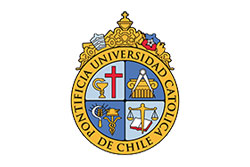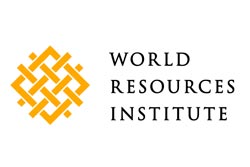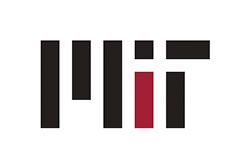Source: Credit Suisse
Photo: thecityfix.com
 More and more of the world’s people are living in (sub-)urban settings. This is stretching many mass transport systems to the breaking point. Sustainable transport expert Dario Hidalgo says governments need to rethink public transport, focusing on quality, safety and integration.
More and more of the world’s people are living in (sub-)urban settings. This is stretching many mass transport systems to the breaking point. Sustainable transport expert Dario Hidalgo says governments need to rethink public transport, focusing on quality, safety and integration.
Richard Hall, from Credit Suisse: How did you get into mass rapid transit (MRT) and bus rapid transit (BRT)?
Dario Hidalgo: After completing a PhD in urban transport planning in 1997, I joined Mayor Enrique Peñalosa’s team and worked on planning the TransMilenio bus system in Bogotá. The government had initially wanted a metro, but it became clear that a BRT network could be built more quickly and at lower cost. It was part of a large-scale urban transformation in my home city and was an instant success. I have since been involved in more than 20 projects worldwide – including in cities in Mexico and others as diverse as Lima, Accra, Istanbul and Indore.
The TransMilenio BRT project in Bogotá has become quite famous. Why?
TransMilenio is a low-cost, high-impact system. The first phase (40 km) was completed in just three years (1998–2000). It captured international attention due to its high capacity – more than 40,000 passengers per hour, per direction – and an innovative public-private partnership model. The city builds the infrastructure, and local entrepreneurs (currently seven groups with nearly 2,000 buses) own and operate the fleet – profitably and without subsidies. Today the BRT is 106 km long and carries more than two million passengers a day. Its success helped mainstream the concept worldwide. Our database indicates that 150 cities have BRT and bus corridors; 115 of these have been created since 2000.
Can you describe some of the typical pitfalls you face when building a BRT network?
Experience around the globe shows the great potential of BRT, but planning, financing and organizational difficulties should not be papered over. The important thing is not to rush into implementation until all the planning has been thought through. Also, every city is unique, so copy/ paste doesn’t work. Most of the obstacles are institutional rather than technical. Such projects are inherently complex as they involve aligning a baffling array of interests. Strong political leadership and well-crafted communications are essential. One of the big advantages of BRT systems is that they can frequently be realized within an elected leader’s term of office.
A new report written by the Institute for Transportation and Development Policy and EMBARQ is titled «The Life and Death of Urban Highways». Your thoughts?
Traditionally, urban transport planning has been all about moving cars, not necessarily people. As a result, most cities in the world have focused on expanding road networks. The result has been appalling. Clearly, creating more roads does not solve congestion; it brings more cars to the streets. It’s like trying to fight obesity by expanding the size of our pants! Several cities – Seoul, San Francisco, Toronto, Vancouver – have actually begun removing urban highways and replacing them with public-transport infrastructure. We urgently need to reallocate funding from urban parking and highways to sustainable transport.
Where are you currently involved in BRT projects? How important is it to be on site?
We support sustainable mobility and urban development initiatives in Mexico, Brazil, Peru, Turkey, India and China. We also work with researchers from Chile, USA, Portugal and Australia via the ALC-BRT Centre of Excellence and support 30 Latin American transit agencies in their quest for quality and integration. On-site meetings are particularly important when it comes to convincing decision makers.
Where are the biggest BRT projects today?
The construction of a 150 km BRT network in Rio de Janeiro in preparation for the FIFA World Cup and 2016 Summer Olympics, and the expansion of Metrobús in Mexico City from 95 to 200 km are two notable examples. The introduction of BRT in Mumbai and Bangalore may be among the most challenging, and capacity enhancements in the saturated corridors of Bogotá and Istanbul will certainly be major undertakings. We expect around 30 cities to introduce BRT in the next five years, primarily in Asia – but also, in the near future, Africa.
How is MRT/BRT changing mobility patterns in both the developed and developing world?
We have observed a cultural shift in Europe and, increasingly, the USA. People used to aspire to live in a house in the suburbs and commute. Today, more and more people want to live in the city itself – in denser, mixed-use areas. We don’t know how this trend will evolve in the developing world, but mass transit planning provides an excellent opportunity to influence the future shape of cities. Places such as Copenhagen, Curitiba and Singapore show how successful strategies that dovetail land use and transport planning can be. We must adapt these models to fit the needs of rapidly emerging economies. This needs to happen fast before car-centric urban sprawl takes root. Interestingly, the Chinese cities of Wuhan and Hangzhou have set up the two largest bike-sharing programs in the world (90,000 and 60,000 bicycles, respectively). Hangzhou plans to expand to 175,000 bikes by 2020. It’s a revolution on two wheels! China now also leads the world in metro systems, with Beijing and Shanghai already surpassing London as the longest networks.
Public transport usage is very high in Latin America. In US cities, it accounts for just 3–4 percent of urban trips. How do you see this evolving?
Transit ridership is growing rapidly in the USA. More people are choosing urban lifestyles. In the major urban centers a culture of membership rather than ownership is emerging thanks to social networks and car-sharing programs. In Latin America, on the other hand, we see the opposite trend: a growing middle class is now able to own more cars and motorcycles, and public transport usage is declining in most cities. The key in Latin America is to improve service and safety, which may require subsidies, and to introduce congestion charging and parking management schemes.
How do you see the future of MRT/BRT as cities expand and technology develops?
Some of the key innovations are in vehicle technology. Trains are becoming lighter and more efficient; buses are catching up with cleaner propulsion technologies such as natural gas and hybrid electric. The overarching goal must be to create multimodal, integrated public-transport networks with «last mile» connectivity to onward transit services as well as car and bike sharing. Mobile user interfaces, which are improving all the time as smartphone penetration rises, play an increasingly important role here. Smart ticketing systems, including electronic purses, are likewise becoming available on mobile devices. I see these technologies being further integrated and refined rather than some fame-changing innovation turning everything on its head.
Can you describe your most unusual MRT/BRT journeys?
Crossing the Bosporus Strait and jumping on and off the fast and frequent Istanbul Metrobüs; gliding through The Strip in Las Vegas on a shiny golden bus-cum-tram; and rattling through hectic and historic Mexico City in a hybrid bus. My most surreal experience was sharing a train carriage with 700-plus people in Mumbai, which has the world’s highest throughput suburban rail system.
Dario Hidalgo has spent the last 24 years helping local and national governments in Latin America, Asia and Africa plan sustainable public transport systems. He publishes regularly in academic journals and holds training courses worldwide. Dr. Hidalgo is based at NGO EMBARQ’s office in Bogotá, Colombia.












